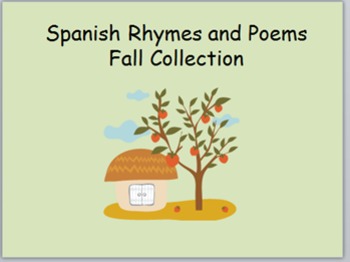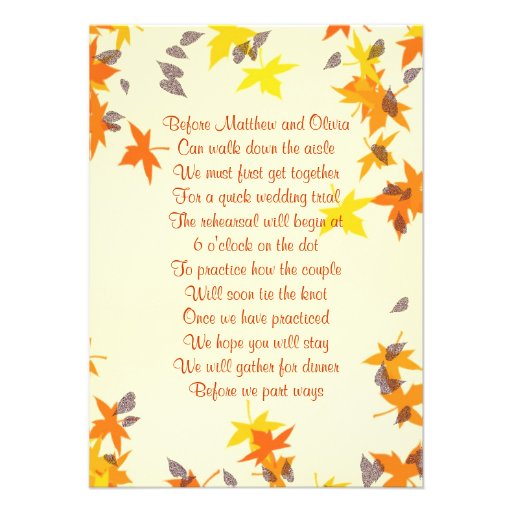Source(google.com.pk)
About Our Emily Dickinson Collection
On the left you will find 3 poetry books published by Emily’s family after her death. Many in the academic community feel that these books were poorly edited and are not true to Dickinson’s vision. Regardless, these are the most familiar versions for the public at large, the versions most often taught in school. We have also listed some of her more popular poems individually. In total, our Emily Dickinson collection consists of over 400 poems.
Emily Dickinson Biography
Emily Dickinson (1830-1886), ‘The Belle of Amherst’, American poet, wrote hundreds of poems including “Because I Could Not Stop for Death”, “Heart, we will forget him!”, “I'm Nobody! Who are You?”, and “Wild Nights! Wild Nights!”;
Wild Nights! Wild Nights!
Were I with thee,
Wild Nights should be
Our luxury!
Futile the winds
To a heart in port, --
Done with the compass,
Done with the chart!
Rowing in Eden!
Ah! the sea!
Might I but moor
To-night in Thee!
Among the ranks of other such acclaimed poets as Walt Whitman, Emily Dickinson is considered one of the most original 19th Century American poets. She is noted for her unconventional broken rhyming meter and use of dashes and random capitalisation as well as her creative use of metaphor and overall innovative style. She was a deeply sensitive woman who questioned the puritanical background of her Calvinist family and soulfully explored her own spirituality, often in poignant, deeply personal poetry. She admired the works of John Keats and Elizabeth Barrett Browning, but avoided the florid and romantic style of her time, creating poems of pure and concise imagery, at times witty and sardonic, often boldly frank and illuminating the keen insight she had into the human condition. At times characterised as a semi-invalid, a hermit, a heartbroken introvert, or a neurotic agoraphobic, her poetry is sometimes brooding and sometimes joyous and celebratory. Her sophistication and profound intellect has been lauded by laymen and scholars alike and influenced many other authors and poets into the 21st Century. There has been much speculation and controversy over details of Dickinson’s life including her sexual orientation, romantic attachments, her later reclusive years, and the editing and publication of various volumes of her poems. This biography serves only as an overview of her life and poetry and leaves the in-depth analysis to the many scholars who have devoted years to the study of Emily Dickinson, the woman and her works.
Emily Dickinson was born into one of Amherst, Massachusetts’ most prominent families on 10 December 1830. She was the second child born to Emily Norcross (1804-1882) and Edward Dickinson (1803-1874), a Yale graduate, successful lawyer, Treasurer for Amherst College and a United States Congressman. Her grandfather Samuel Fowler Dickinson (1775-1838) was a Dartmouth graduate, accomplished lawyer and one of the founders of Amherst College. He also built one of the first brick homes in the New England town on Main Street, which is now a National Historic Landmark ‘The Homestead’ and one of the now preserved Dickinson homes in the Emily Dickinson Historic District.
Emily had an older brother named William Austin Dickinson (1829-1895) (known as Austin) who would marry her most intimate friend Susan Gilbert in 1856. Her younger sister’s name was Lavinia ‘Vinnie’ Norcross Dickinson (1833-1899). The Dickinsons were strong advocates for education and Emily too benefited from an early education in classic literature, studying the writings of Virgil and Latin, mathematics, history, and botany. Until she was ten years old, she and her family lived with her grandfather Samuel and his family on Main Street. In 1840 they moved to North Pleasant Street, Emily’s window overlooking the West Street Cemetery where daily burials occurred. The same year, Emily entered Amherst Academy under the tutelage of scientist and theologian, Edward Hitchcock.
Dickinson proved to be a dazzling student and in 1847, though she was already somewhat of a ‘homebody’, at the age of seventeen Emily left for South Hadley, Massachusetts to attend the Mount Holyoke Female Seminary. She stayed there less than a year and some of the theories as to why she left are homesickness and poor health. Another reason some speculate is that when she refused to sign an oath publicly professing her faith in Christ, her ensuing chastisement from Mary Lyon proved to be too much humiliation. Back home in the patriarchal household of aspiring politicians, Emily started to write her first poems. She was in the midst of the college town’s society and bustle although she started to spend more time alone, reading and maintaining lively correspondences with friends and relatives.
In 1855 Emily and her sister spent time in the cities of Washington, D.C. and Philadelphia, Pennsylvania, the same year her father bought the Main Street home where she was born. He built an addition to The Homestead, replete with gardens and conservatory. Thereafter he held a yearly reception for Amherst College’s commencement, to which Emily made an appearance as the gracious hostess. In 1856 Emily’s brother, now himself a successful Harvard graduate and Amherst lawyer, married her best friend Susan Gilbert. They moved into their home nearby ‘The Evergreens’, a wedding gift from his father. They frequently entertained such guests as Ralph Waldo Emerson and Samuel Bowles, editor of the Springfield Republican, who would publish a few of Emily’s poems and become a great friend to her and possible object of affection in some of her poems. In 1862 Dickinson answered a call for poetry submissions in the Atlantic Monthly. She struck up a correspondence with its editor, Thomas Wentworth Higginson. He had tried to correct her work, but she refused to alter it, though they soon became friends and it is speculated that Emily also had romantic feelings for him.
Dark times were soon to fall on Emily. In 1864 and 1865 she went to stay with her Norcross cousins in Boston to see an eye doctor whereupon she was forbidden to read or write. It would be the last time she ventured from Amherst. By the early 1870’s Emily’s ailing mother was confined to her bed and Emily and her sister cared for her. Around the time her father Edward died suddenly in 1874 she stopped going out in public though she still kept up her social contacts via correspondence, writing at her desk in her austere bedroom, and seemed to have enjoyed her solitude. She regularly tended the homestead’s gardens and loved to bake, and the neighborhood children sometimes visited her with their rambunctious games. In 1878 her friend Samuel Bowles died and another of her esteemed friends Charles Wadsworth died in 1882, the same year her mother succumbed to her lengthy illness. A year later her brother Austin’s son Gilbert died. Dickinson herself had been afflicted for some time with her own illness affecting the kidneys, Bright’s Disease, symptoms of which include chronic pain and edema, which may have contributed to her seclusion from the outside world.
‘Called Back’: Emily Dickinson died on 15 May 1886, at the age of fifty-six. She now rests in the West Cemetery of Amherst, Hampshire County, Massachusetts. Not wishing a church service, a gathering was held at The Homestead. She was buried in one of the white dresses she had taken to wearing in her later years, violets pinned to her collar by Lavinia.
Although many friends including Helen Hunt Jackson had encouraged Dickinson to publish her poetry, only a handful of them appeared publicly during her lifetime. Upon her death her sister Lavinia found hundreds of them tied into ‘fascicles’ stitched together by Emily’s own hand. Some were written in pencil, only a few titled, many unfinished. Lavinia enlisted the aid of Higginson and Mabel Loomis Todd to edit them and roughly arrange them chronologically into collections: Poems, Series 1 in 1890, Poems, Series 2 in 1891, and Poems, Series 3 in 1896. The edits were aggressive to standardise punctuation and capitalisation and some poems re-worded, but by and large it was a labour of love. From Thomas Wentworth Higginson's Preface to Poems, Series 1;
--flashes of wholly original and profound insight into nature and life; words and phrases exhibiting an extraordinary vividness of descriptive and imaginative power, yet often set in a seemingly whimsical or even rugged frame....the main quality of these poems is that of extraordinary grasp and insight.
In 1914 Emily’s niece Martha Dickinson Bianchi published another of the many collections to follow. Even with the first few volumes her work attracted much attention, though not without its critics. In 1892, Thomas Bailey Aldrich published a scathing review in the Atlantic Monthly; She was deeply tinged by the mysticism of Blake, and strongly influenced by the mannerism of Emerson....but the incoherence and formlessness of her—versicles are fatal. In 1955, Thomas H. Johnson published the first comprehensive collection of her poems in three volumes titled The Poems of Emily Dickinson, Including Variant Readings Critically Compared With all Known Manuscripts. Johnson’s The Letters of Emily Dickinson appeared in 1958.
This Is My Letter To The World
This is my letter to the world,
That never wrote to me,--
The simple news that Nature told,
With tender majesty.
Her message is committed
To hands I cannot see;
For love of her, sweet countrymen,
Judge tenderly of me!
Short Rhyming Poems Poems About Love For Kids About Life About Death About Friendship For Him About Family Tumblr For Her About Nature
Short Rhyming Poems Poems About Love For Kids About Life About Death About Friendship For Him About Family Tumblr For Her About Nature

Short Rhyming Poems Poems About Love For Kids About Life About Death About Friendship For Him About Family Tumblr For Her About Nature

Short Rhyming Poems Poems About Love For Kids About Life About Death About Friendship For Him About Family Tumblr For Her About Nature

Short Rhyming Poems Poems About Love For Kids About Life About Death About Friendship For Him About Family Tumblr For Her About Nature

Short Rhyming Poems Poems About Love For Kids About Life About Death About Friendship For Him About Family Tumblr For Her About Nature

Short Rhyming Poems Poems About Love For Kids About Life About Death About Friendship For Him About Family Tumblr For Her About Nature

Short Rhyming Poems Poems About Love For Kids About Life About Death About Friendship For Him About Family Tumblr For Her About Nature

Short Rhyming Poems Poems About Love For Kids About Life About Death About Friendship For Him About Family Tumblr For Her About Nature
Short Rhyming Poems Poems About Love For Kids About Life About Death About Friendship For Him About Family Tumblr For Her About Nature
Short Rhyming Poems Poems About Love For Kids About Life About Death About Friendship For Him About Family Tumblr For Her About Nature
Short Rhyming Poems Poems About Love For Kids About Life About Death About Friendship For Him About Family Tumblr For Her About Nature

Short Rhyming Poems Poems About Love For Kids About Life About Death About Friendship For Him About Family Tumblr For Her About Nature
Short Rhyming Poems Poems About Love For Kids About Life About Death About Friendship For Him About Family Tumblr For Her About Nature

Short Rhyming Poems Poems About Love For Kids About Life About Death About Friendship For Him About Family Tumblr For Her About Nature


No comments:
Post a Comment